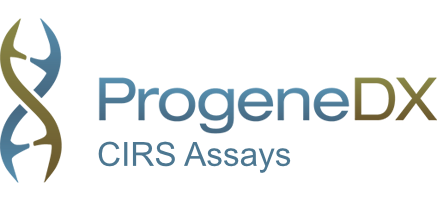Our current test and molecular pathway report is focused on Chronic Inflammatory Response Syndrome (CIRS) but can be helpful for patients suffering Chronic Fatigue Syndrome, Fibromyalgia, Post Lyme Syndrome and other chronic fatiguing illnesses
If your patient exhibits the following symptoms you should consider using the Progene DX CIRS assay to provide information about dysregulated gene expression related to your patient's illness.
The Most Common Signs and Symptoms of CIRS
Listed below are the most common of over 30 signs and symptoms that Dr. Shoemaker has documented in patients suffering from exposure to biotoxins:
Fatigue, weakness
Post-exertional malaise
Memory problems, difficulties with concentration and executive function
Disorientation and confusion
Headaches
Vertigo, light headedness
Muscle aches, cramping, joint pains without inflammatory arthritis
Hypersensitivity to bright light, blurred vision, burning or red eyes, tearing
Cough, asthma-like illness, shortness of breath, chronic sinus congestion
Air hunger or unusual shortness of breath at rest
Chronic abdominal problems including nausea, cramping, secretory diarrhea
A propensity to experience static shocks
According to a 2009 World Health Organization report, in a Water Damaged Building people are chronically exposed to different microbes and/or compounds of microbial or other origin that are present in the indoor air of a WDB. These compounds can be called toxins or inflammagens; all initiate an innate immune inflammatory response in the human host. These microbes and compounds include but are not limited to fungi, bacteria, actinomycetes, and mycobacteria and their toxins; as well as inflammagens from fragments of fungal structures; and beta glucans, mannans, hemolysins, proteinases, spirocyclic drimanes and volatile organic compounds (VOCs). A constant exposure to the above microbes and/or compounds can result in a recurrent activation of the immune system, leading to exaggerated immune responses and prolonged production of inflammatory mediators, especially in the absence of regulation of inflammation by neuropeptides MSH or VIP.
Some of the organisms that make biotoxins that can cause CIRS include dinoflagellates (Pfiesteria, Gambierdiscus (ciguatera), Karenia (and other species that produce brevetoxins) cyanobacteria (Microcystis, Cylindrospermopsis, Lyngbya wollei), fungi (Wallemia, Stachybotrys, Chaetomium, Aspergillus versicolor, penicillioides, and others); actinomycetes (Streptomyces and others); apicomplexans (Babesia, Eimeria); and spirochetes (Borrelia spp burgdorferi and (likely) B. lonestari). Organisms such as commensal multiple-antibiotic resistant coagulase negative staphylococci (MARCoNS), including methicillin resistant Staphylococcus epidermidis, may also contribute to CIRS.
Patients with CIRS are often misdiagnosed as having depression, stress, allergy, fibromyalgia, post-traumatic stress disorder, Chronic Fatigue Syndrome somatization, etc, and are treated with various therapies, some of which are costly, ineffective, and even may be potentially toxic. Treating CIRS patients for the above conditions will not improve their symptoms of CIRS, let alone do anything to correct the underlying pathophysiology. The reason this illness is frequently misdiagnosed is because health care providers are not aware of tests that can identify CIRS. With proper detection, diagnosis, and documentation of the objective basis of illness pathophysiology, CIRS may be treated effectively to improve symptoms and decrease the recurrence of uncontrolled inflammatory responses.


